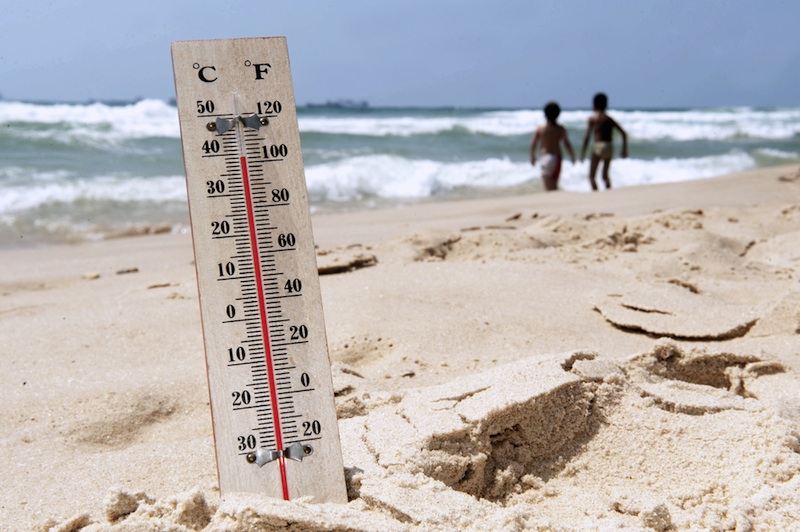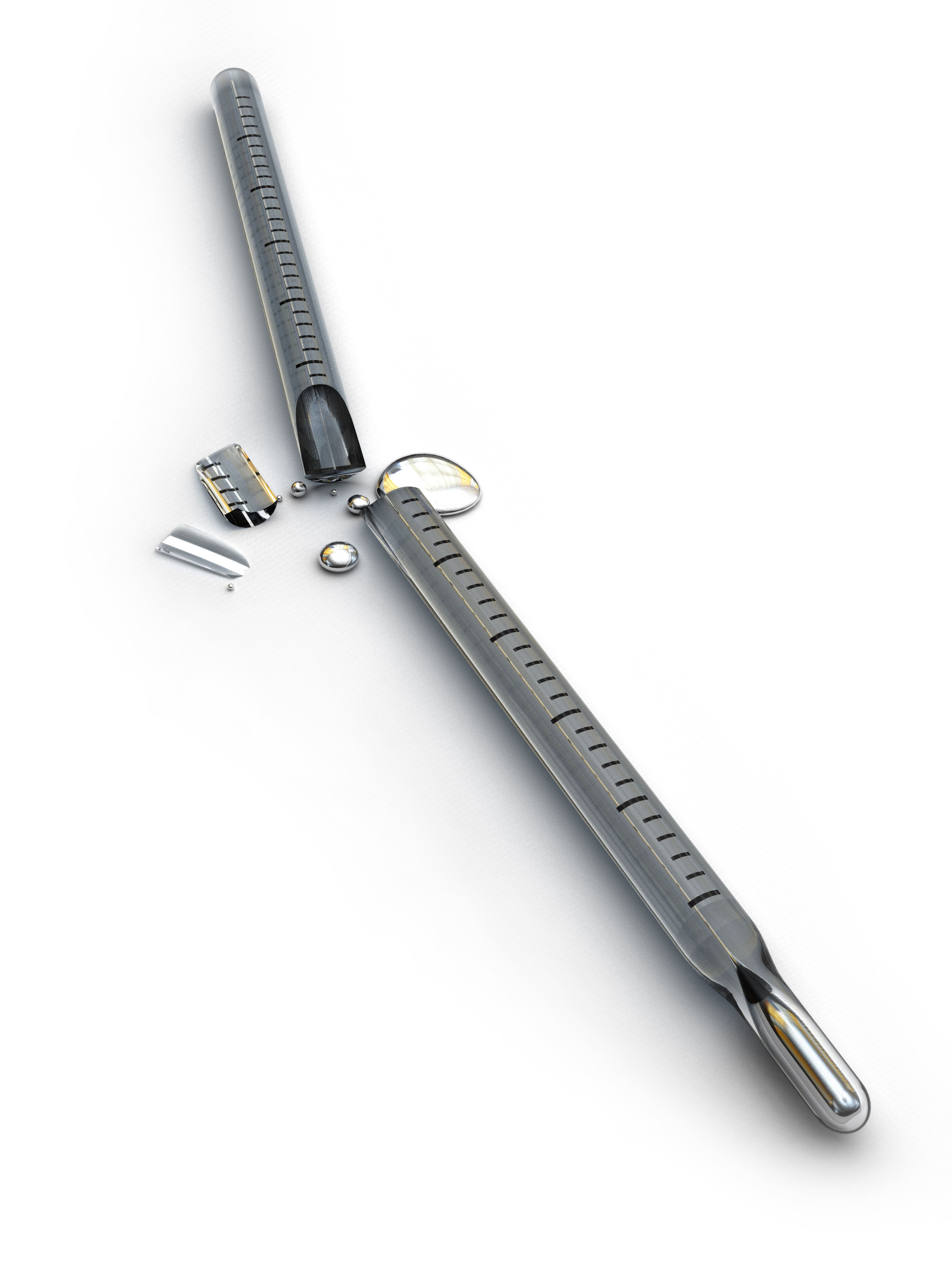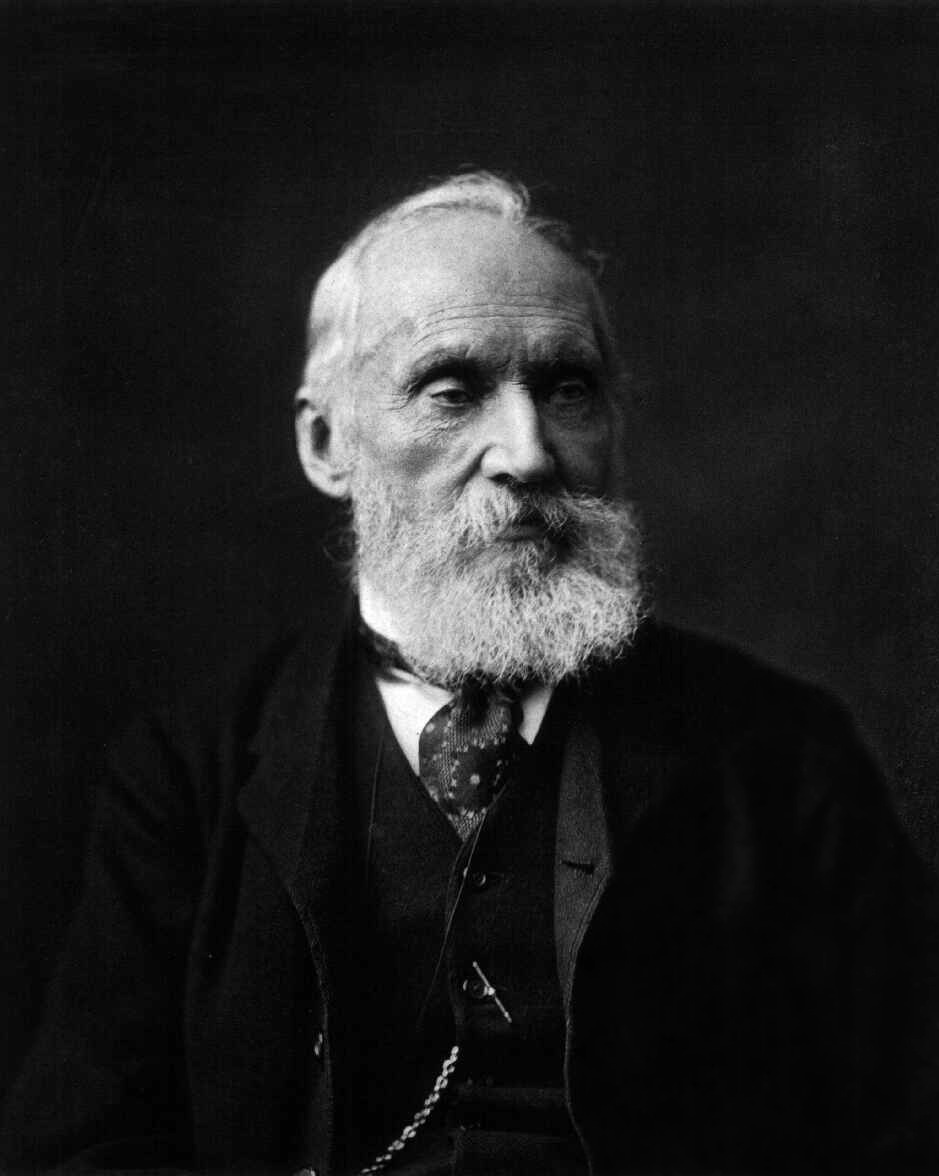What is temperature? Facts about Fahrenheit, Celsius and Kelvin scales
Which is the best temperature scale?

Hot and cold are measured using a numeric scale called temperature. Temperature scales are how we communicate about the weather, measure safety and comfort and explain the physical world. Using baselines chosen by scientists to create relative measurements, temperature scales measure heat intensity, or the amount of thermal energy contained in a material or substance (like the air, a pot of water or the surface of the sun). There are three commonly used measurement systems: Fahrenheit, Celsius and Kelvin.
What is temperature?
Temperature is energy measured with a tool called a thermometer, which comes from the Greek words "thermos" (hot) and "metron" (measure), according to the Online Etymology Dictionary. Another definition of temperature is that it's a measure of the average kinetic energy — the energy of a mass in motion — of a substance's molecules, according to Georgia State University
The ancient Greek physician Hippocrates allegedly taught that the human hand could be used to judge the presence of fever in a person as early as 400 B.C., according to a 2019 report in the journal Nature Public Health Emergency Collection. However, precise instruments to measure human body temperature were not developed until the sixteenth and seventeenth centuries.
Fahrenheit: The first precise thermometer
In 1714, the Polish-born Dutch physicist, inventor and scientific instrument maker Daniel Gabriel Fahrenheit unveiled a mercury-based thermometer. Mercury, a liquid metal, expands and contracts based on the surrounding temperature When Fahrenheit placed mercury in a closed tube marked with a numbered scale, he saw the mercury rise and fall when it was exposed to different temperatures. According to The Royal Society in the United Kingdom, this was the world's first known practical, accurate thermometer.
Fahrenheit had based his invention on Danish scientist Ole Roemer's alcohol-based thermometer. Roemer labeled his temperature scale with zero marked at the temperature where brine (salt water) froze and 60 as the point at which water boiled, wrote Ulrich Grigull, the late director of the Institute for Thermodynamics at the Technical University of Munich in Germany, in a 1986 conference presentation. Ice melted at 7.5 degrees on the Roemer scale, and a human body registered at 22.5.
Related: What if temperature determined a baby's sex?
Fahrenheit's thermometer, though, was much more accurate. He used the same freezing and boiling reference points as Roemer's scale — referred to in his writings as "Extream Cold" and "Extream Hott" — but roughly multiplied the scale by four to divide each marker on the scale into finer increments. On Fahrenheit's scale, wrote Grigull, the four reference points were: 0 (at the combined freezing temperature of brine), 30 (the freezing point of regular water), 90 (body temperature) and 240 (the boiling point of water).
Related: Supernovas heat atoms to hundreds of millions of degrees Fahrenheit.

Fahrenheit published a paper describing his scale in the journal Philosophical Transactions in 1724. That same year, Fahrenheit was inducted into the Royal Society, the United Kingdom’s national science academy. Grigull wrote "His fellowship of the Royal Society resulted in his thermometer, and thereby his scale, receiving particular acceptance in England and consequently later also in North America and the British Empire." Fahrenheit's measurement system, sometimes referred to as part of the imperial system, traveled the world with the British Empire.
Related: The world's oceans are heating up at an accelerated rate.
However, only a few countries today still use Fahrenheit to measure temperature. The United States and its territories, along with the Bahamas, Palau, Belize, the Cayman Islands, the Federated States of Micronesia and the Marshall Islands, have stuck with the temperature scale, despite the rest of the world moving to the Celsius scale, according to the online geography resource World Atlas.
After Fahrenheit's death in 1736, the Fahrenheit scale was recalibrated to make it slightly more accurate. The exact freezing and boiling points of plain water, minus the salt, were marked at 32 and 212 degrees Fahrenheit, respectively. Normal human body temperature was marked at 98.6.
Read more: Has the average human body temperature changed?
Temperatures in Fahrenheit are often expressed as a number followed by ℉, or simply F.
Celsius: A more scientific scale
"Anders Celsius should be recognized as the first to perform and publish careful experiments aiming at the definition of an international temperature scale on scientific grounds," wrote Olof Beckman, a solid state physicist at Uppsala University in Sweden. Celsius was a Swedish astronomer and is credited with discovering the connection between the aurora borealis, also known as the Northern Lights, and the Earth's magnetic field, as well as a method for determining the brightness of stars, according to the U.S. National High Magnetic Field Laboratory.
In a proposal to the Royal Swedish Academy of Sciences in 1742, Celsius proposed a scale based on two fixed points: 0 (the boiling point of water) and 100 (the freezing point of water). Following Celsius' death in 1744, the famous Swedish taxonomist Carl Linnaeus proposed that the fixed points be switched, with 0 indicating the freezing point of water and 100 its boiling point, according to The Legacy of Anders Celsius in JSTOR Daily, a digital library. The scale has also been extended to include negative numbers.
Celsius initially called his scale "Centigrade" from the Latin for one hundred ("centi") degrees ("grade"), because there were 100 points between water freezing and boiling. In 1948, an international conference on weights and measures (Conference General des Poids et Measures) changed the name to "Celsius" in honor of Anders Celsius, according to the U.S. National Institute of Standards and Technology (NIST).
Related: As the 2015 Paris Agreement aims to cut emissions, we have already blown past warming targets.
The Celsius scale is part of the metric system, otherwise known as the International System of Units (SI). Temperatures in Celsius can be expressed as a number of degrees followed by the symbols ℃, or simply C.
The Celsius scale has 100 degrees between water boiling and freezing, while Fahrenheit has 180 degrees. This means that a single degree Celsius equals 1.8 degrees Fahrenheit. At -40°, both scales have the same value: -40 C = -40 F.
Kelvin: An absolute scale for scientists
In 1848, British mathematician and scientist William Thomson (also known as Lord Kelvin) proposed an absolute temperature scale, which was independent of the properties of a substance like ice or the human body. He suggested that the range of possible temperatures in the universe far exceeded those proposed by Celsius and Fahrenheit. The concept of an absolute minimum temperature was not new, according to NIST, but Kelvin put an exact number to it: 0 kelvins is equal to -273.15 C.
Related: What's the coldest place in the universe?
"Thermodynamic temperature" is distinct from temperatures based on freezing and melting points of fluids, Julia Scherschligt, an expert in vacuum and pressure metrology at the National Institute of Science and Technology in the United States, told Live Science.
"Thermodynamic temperature is absolute, not relative to fixed points. It describes the amount of kinetic energy contained by the particles that constitute a blob of matter, that wiggle and jiggle around at sub-microscopic levels," she said. "As the temperature drops, the particles slow down until at some point, all motion ceases. This is absolute zero, which is the benchmark of the Kelvin scale."
Related: Scientists pinpoint a new record for coldest natural temperature in Greenland.
Absolute zero occurs at −273.15 C or −459.67 F. Until recently, scientists thought that humans could not recreate this temperature (because to become that cold, energy would have to be added to the system to cool it, meaning that the system would be warmer than absolute zero). But in 2013, German physicists managed to push particles into paradoxical temperatures below absolute zero.

To Kelvin's mind, absolute zero was where a temperature scale should begin, but for convenience, he used the markers and intervals of the widely-known Celsius scale as a base for his own. As such, in the Kelvin scale, water freezes at 273.15 K (0 C) and boils at 373.15 K, or 100 C.
A single kelvin is referred to as a unit, rather than a degree, and is equal to a single degree on the Celsius scale. The Kelvin scale is mainly used by scientists.
In 2018, the Kelvin was redefined to make it more accurate, according to a paper in the journal Metrologia, and its definition is now tethered to the Boltzmann constant. This constant links temperature to the kinetic energy inside matter.
The new definition, according to the General Conference on Weights and Measures, is: "The kelvin, symbol K, is the SI unit of thermodynamic temperature; its magnitude is set by fixing the numerical value of the Boltzmann constant to be equal to exactly 1.380649 × 10-23...J K-1 [joules per kelvin]."

Which scale is best?
The best scale for measuring temperatures can vary depending on the circumstance, namely the community with whom you are sharing information. Historically, Americans use the Fahrenheit scale for daily life, including for weather and cooking, so it is best to use Fahrenheit measurements in the United States. But most countries use Celsius, so it is better to use that scale across the rest of the globe, and while communicating internationally. Ultimately, the best scale for casual use depends on convention and what people around you are using.
But which scale is the most precise?
"Precision isn't really a feature of a scale," Scherschligt said. Rather, the precision of a measurement depends on the increments given by the thermometer being used, and the technique of the person using it. "A number can be measured with arbitrary precision on any scale. But only the kelvin is physics-based, which means it is the most accurate scale."
The Kelvin scale, which is based on the physical properties of any gas, can be calibrated precisely anywhere in the universe with proper equipment and a universal constant. That’s why scientists often prefer to use the Kelvin scale in their experiments.
Conversion formulas
Celsius to Fahrenheit: Multiply by 9, divide by 5, then add 32
Fahrenheit to Celsius: Subtract 32, then multiply by 5, then divide by 9
Celsius to Kelvin: Add 273
Kelvin to Celsius: Subtract 273
Fahrenheit to Kelvin: Subtract 32, multiply by 5, divide by 9, and then add 273.15
Kelvin to Fahrenheit: Subtract 273.15, multiply by 1.8, and then add 32
Additional resources
- Here is a video on how to make a thermometer at home.
- This video compares the coldest temperatures known to humans with the hottest.
- Meet the universal constants that define the International System of Units, also known as the metric system.
Get the world’s most fascinating discoveries delivered straight to your inbox.
Sarah Wild is a science journalist and a regular contributor to Live Science and Space.com. She is the author of "Searching African Skies: The Square Kilometre Array", "Innovation: Shaping South Africa through Science" and "South Africa's Quest to Hear the Songs of the Stars." Wild was the winner of the Siemens pan-African Profile Awards for science journalism in 2013 and received the Dow Technology and Innovation Reporting award in 2015.
